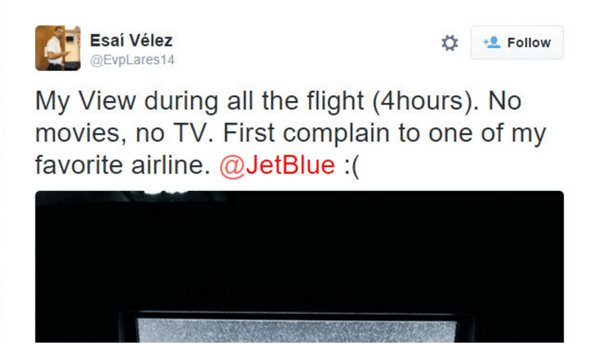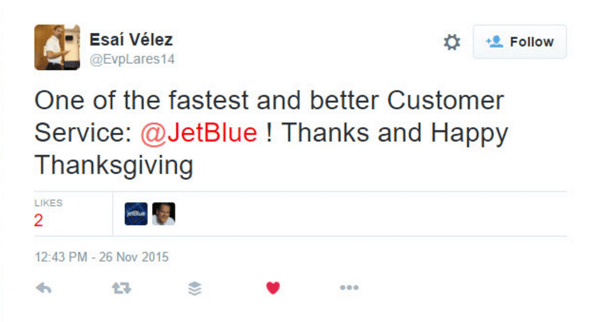A sporadic presence on social networks is no longer sufficient at this time of strong social growth on virtual networks.
Today, web surfers, i.e. a good 90% of the population, search for information on the social pages they like to use most. A company’s presence on social networks often translates into a first-person relationship with its consumers, who frequent a company page to get to know the brand better and to interact with it, taking the opportunity to forward requests, curiosities and questions about its products.
So if you choose to present your brand on social networks, you have to be aware that your customers will want to get in touch with you. The simple page on Facebook or Twitter will then turn into a real customer care where you can respond to your customers’ needs. The numbers speak for themselves: 53 per cent of online users have stopped considering a brand because they were not sufficiently considered when faced with a problem they encountered, 25 per cent have made the same decision because of excessively long waits on the phone for customer service. Not only does customer care need more attention, but the speed of responses decreases considerably. 68% of users believe that a quick response is vital.
How to offer the best customer service experience on social networks
Be where your customers are looking for you
The first thing you should do when considering leveraging social networks as a customer service channel for your company would be to figure out which social channel your target customers use the most. To do this, look for mentions that include your brand’s name within the most popular social networks. If you still believe that no one is talking about your brand in posts or comments, then tap into the conversations of people interested in your industry to see where they are browsing, on which social networks they are most active.
There are social networks that are more suitable than others for creating customer service: Facebook and Twitter are certainly the most suitable for this purpose. In fact, many large companies have decided to harness the power of Twitter’s #hashtags to improve their findability.
Listen to what your customers have to say
Your customers are your best weapon for structuring an ever better business strategy.
Listening to your customers will help you understand:
- What are the nature of your customers’ problems
- How many comments are positive and how many negative
- How many problems you manage to answer using the guides you have included on your website.
- At what time of day are your customers most active on social media
These points will help your company to determine certain aspects such as the types of problems your customers encounter and in what number, the efficiency of the guides, best practices and FAQs you have published on your website, or even to determine the best time slot for posting on the notice board.
Answer quickly
The social world is made up of demanding users who are used to getting answers to their questions in a very short time. 48% of users expect to receive an answer within 1 hour, while 17% even within a few minutes. Of course, this is not an easy thing to do, which is why it is important to organise an efficient division of labour within your company to meet these demands.
It is essential that your customers’ queries are answered within a very short timeframe and with comprehensive answers that are able to address your customer’s concerns.
It should be borne in mind that customer support on social networks is completely public, which is why it is very important to process every single request of whatever type with kindness and friendliness. It may sometimes be necessary to make use of private messages to process those requests that require more space to process a response or where an exchange of sensitive data such as e-mail address, bank details, personal data etc. is required. If you decide to process a comment from one of your customers via live chat, post a comment stating that you have taken care of the problem in a more appropriate location so as to show the public that the issue has been resolved elsewhere.
It may happen, especially initially, that you receive questions that cannot be answered instantly because they may be too technical in nature and beyond your knowledge; it is important in such a case to still provide an answer to the consumer by advising him/her of the wait necessary to have his/her request processed by an expert.
Summarising what has been said so far, here are some practical tips for excellent customer care:
- Identify the problem correctly
- Provide links to further information
- End the conversation by saying thank you
- Insert your name at the end of each message (even fictitious)
- Organise your activities in such a way that you can answer all messages correctly in the shortest possible time.
Determines when to handle an ‘offline’ request
95.6 per cent of consumers are influenced by other comments on brands’ social pages. With this figure you can see for yourself how important it is to generate a customer base that is satisfied with the attention you give them. A customer dissatisfied with your product can be won back through great customer service.
As I said above, not all of your customers’ difficulties can be solved in 140 characters so you need to be adept at understanding when to address an “offline” request. By offline I mean moving storage to a more appropriate place where you will be able to exchange longer messages or where you can exchange sensitive data to hide from curious eyes on your wall.
Which requests to handle offline:
- The customer needs targeted assistance on two or more issues
- Sensitive data such as e-mail address, bank details, personal data need to be exchanged.
Customer service is of utmost importance, especially in sectors where the competition is disarming. Customers who receive service are more likely to choose you for this and future purchases. After all, just think of our shopping experiences in shops, aren’t you more likely to buy from a trader who treats you with kindness and attention?
Improving your brand awareness and increasing sales is not just a matter of competitive prices, especially in an era when people recognise and appreciate quality products. The quality of service you give your customers will be directly proportional to the image you give your company.
If you decide to tackle the social world and assist your customers in choosing your products, bear in mind not to make these mistakes:
- Never neglect your customers. Answer all their questions, whether they are positive or negative.
- Never delete comments unless they are SPAM. Deleting a negative comment to preserve your company’s image will only damage your relationship with your customer and increase the possibility of negative publicity about you
- Don’t get defensive. If you receive negative comments, thank the customer for voicing their problem to you, try to solve it with them and apologise for the inconvenience that may (or may not) have caused them the problem in question.
Constant monitoring of your social pages will optimise your company’s image and differentiate you from acceptable customer care with exceptional customer service, resulting in happy word-of-mouth customers and excellent publicity.
Still don’t believe in the potential of great social customer care?
Then take a look at this experience:
Esaí Vélez is a guy who during his 4-hour flight with the company JetBlue posted a tweet on the company’s wall where in a disappointed tone he pointed out that his TV was the only one on the entire plane that was not working.

The company, which could have ignored the tweet or simply apologised, approached Esaí Vélez amicably and replied to him in this way:
“Oh no! That’s not what we like to hear! Is it just your TV that doesn’t work?”
“We hate it when that happens. Send us a DM with your confirmation code to get a voucher for your broken TV.”
So the company not only apologised for the impropriety, but even gave the boy a voucher. The result of this attention appeared only a few minutes later in a tweet from the boy:
“One of the fastest and best customer services: @JetBlue! Thank you and happy Thanksgiving!”

I could list many similar situations, some of them very funny, maybe I will dedicate an article to that. But now let us draw the conclusions of this article.
The example of JetBlue explains how easy it is to turn a dissatisfied customer into a happy one. In most cases it is enough to put ourselves in our customer’s shoes before coming to hasty conclusions and risking appearing rude with the sole consequence of losing a valuable customer.





